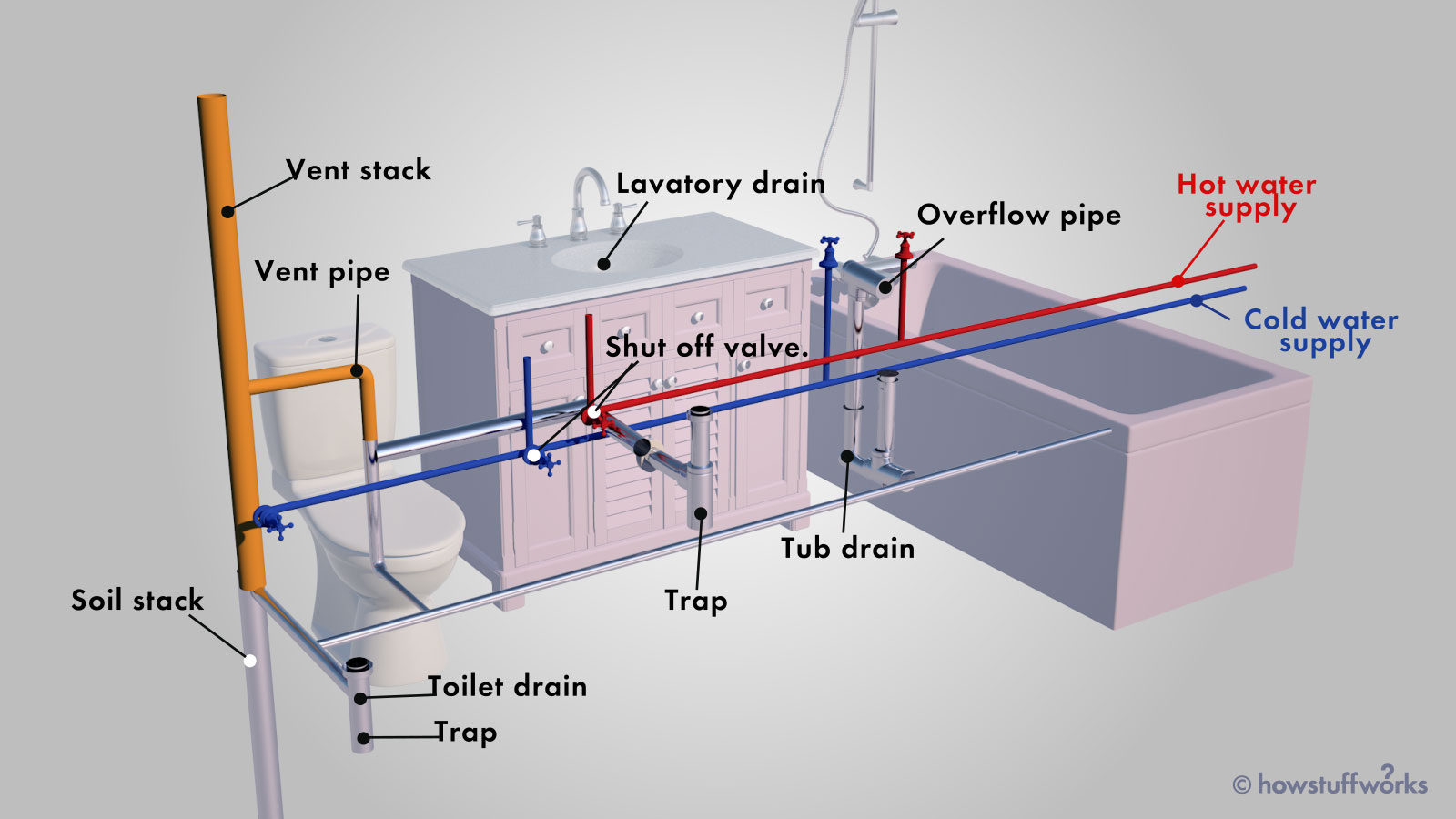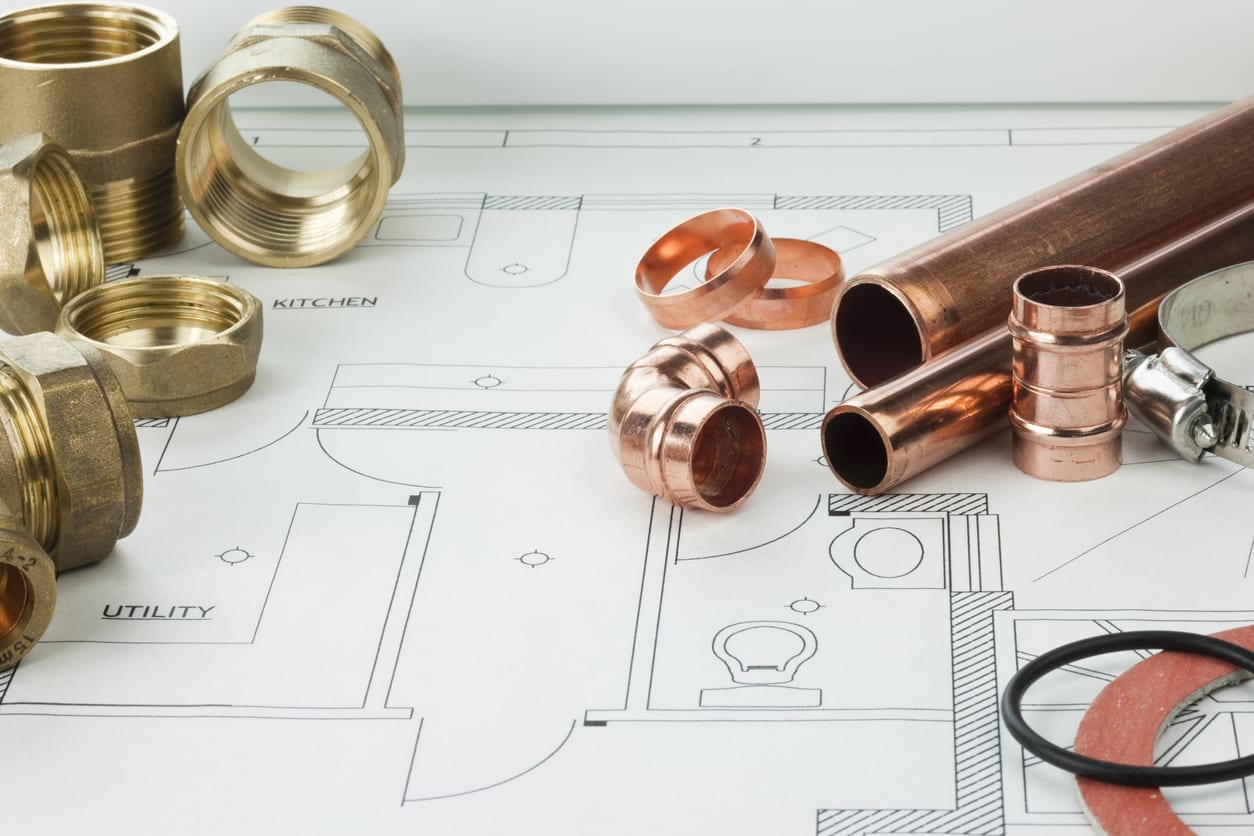Structure of Your Home's Plumbing System: Why It Matters
Structure of Your Home's Plumbing System: Why It Matters
Blog Article
This great article down below about Plumbing Installation 101: All You Need to Know is seriously intriguing. Try it and make your own conclusions.

Comprehending just how your home's pipes system works is crucial for each home owner. From delivering clean water for alcohol consumption, cooking, and showering to safely eliminating wastewater, a properly maintained plumbing system is vital for your family's health and wellness and comfort. In this extensive overview, we'll discover the intricate network that comprises your home's pipes and deal suggestions on upkeep, upgrades, and dealing with common problems.
Introduction
Your home's pipes system is more than simply a network of pipelines; it's an intricate system that ensures you have access to tidy water and reliable wastewater elimination. Understanding its elements and just how they interact can assist you stop pricey repairs and guarantee whatever runs efficiently.
Standard Elements of a Plumbing System
Pipes and Tubing
At the heart of your plumbing system are the pipes and tubing that bring water throughout your home. These can be constructed from various products such as copper, PVC, or PEX, each with its benefits in terms of toughness and cost-effectiveness.
Components: Sinks, Toilets, Showers, etc.
Components like sinks, toilets, showers, and bathtubs are where water is made use of in your home. Understanding how these components attach to the plumbing system aids in identifying problems and preparing upgrades.
Shutoffs and Shut-off Points
Valves control the flow of water in your pipes system. Shut-off shutoffs are critical throughout emergencies or when you require to make repairs, allowing you to separate parts of the system without interfering with water circulation to the whole home.
Water System System
Main Water Line
The primary water line links your home to the community supply of water or a private well. It's where water enters your home and is distributed to numerous components.
Water Meter and Stress Regulator
The water meter actions your water use, while a stress regulator guarantees that water flows at a safe pressure throughout your home's plumbing system, preventing damages to pipes and fixtures.
Cold Water vs. Warm water Lines
Comprehending the distinction between cold water lines, which supply water directly from the main, and warm water lines, which bring heated water from the hot water heater, aids in troubleshooting and preparing for upgrades.
Drain System
Drain Piping and Traps
Drain pipes bring wastewater far from sinks, showers, and commodes to the sewage system or septic system. Catches prevent sewer gases from entering your home and likewise trap particles that might create clogs.
Air flow Pipes
Air flow pipes allow air into the drain system, avoiding suction that could reduce drainage and trigger traps to empty. Proper air flow is vital for maintaining the honesty of your plumbing system.
Importance of Appropriate Drainage
Making certain appropriate drainage stops backups and water damages. Frequently cleaning drains and keeping traps can protect against costly fixings and expand the life of your plumbing system.
Water Heater
Types of Water Heaters
Hot water heater can be tankless or traditional tank-style. Tankless heaters warm water as needed, while tanks keep warmed water for prompt use.
Updating Your Plumbing System
Reasons for Updating
Updating to water-efficient fixtures or replacing old pipes can enhance water high quality, lower water bills, and enhance the worth of your home.
Modern Pipes Technologies and Their Advantages
Explore technologies like smart leak detectors, water-saving bathrooms, and energy-efficient hot water heater that can conserve cash and lower environmental influence.
Price Considerations and ROI
Calculate the in advance expenses versus long-lasting financial savings when considering pipes upgrades. Several upgrades pay for themselves through decreased utility expenses and less fixings.
Exactly How Water Heaters Connect to the Plumbing System
Recognizing how water heaters connect to both the cold water supply and hot water circulation lines aids in identifying problems like insufficient hot water or leakages.
Maintenance Tips for Water Heaters
Regularly purging your hot water heater to eliminate debris, inspecting the temperature settings, and evaluating for leakages can expand its lifespan and boost energy performance.
Common Pipes Concerns
Leaks and Their Reasons
Leakages can take place due to maturing pipes, loose installations, or high water stress. Resolving leaks quickly stops water damages and mold development.
Obstructions and Blockages
Clogs in drains and toilets are usually caused by purging non-flushable products or a build-up of grease and hair. Using drain screens and bearing in mind what goes down your drains can stop obstructions.
Indications of Pipes Troubles to Expect
Low water pressure, slow-moving drains, foul odors, or abnormally high water expenses are indications of prospective plumbing troubles that must be resolved without delay.
Plumbing Upkeep Tips
Regular Evaluations and Checks
Arrange yearly plumbing inspections to catch concerns early. Seek indicators of leaks, corrosion, or mineral buildup in taps and showerheads.
DIY Upkeep Tasks
Simple tasks like cleaning faucet aerators, looking for commode leakages utilizing dye tablets, or shielding exposed pipelines in cold climates can protect against major plumbing issues.
When to Call a Professional Plumbing
Know when a pipes issue calls for expert knowledge. Trying complicated repair services without correct knowledge can bring about even more damage and higher fixing prices.
Tips for Decreasing Water Use
Simple behaviors like repairing leakages promptly, taking shorter showers, and running complete tons of laundry and meals can preserve water and lower your energy costs.
Eco-Friendly Plumbing Options
Take into consideration lasting plumbing products like bamboo for flooring, which is durable and green, or recycled glass for counter tops.
Emergency situation Readiness
Actions to Take During a Plumbing Emergency situation
Know where your shut-off shutoffs are located and exactly how to switch off the supply of water in case of a ruptured pipe or major leakage.
Value of Having Emergency Situation Get In Touches With Handy
Keep call details for neighborhood plumbers or emergency solutions conveniently available for quick response throughout a pipes crisis.
Environmental Influence and Preservation
Water-Saving Fixtures and Appliances
Setting up low-flow faucets, showerheads, and toilets can dramatically reduce water usage without sacrificing performance.
Do It Yourself Emergency Situation Fixes (When Suitable).
Temporary solutions like using duct tape to spot a dripping pipe or positioning a bucket under a dripping tap can minimize damage up until a specialist plumbing gets here.
Verdict.
Recognizing the makeup of your home's pipes system equips you to preserve it efficiently, saving time and money on repair services. By adhering to regular maintenance regimens and staying notified about modern pipes innovations, you can ensure your plumbing system runs successfully for several years to come.
HOW YOUR PLUMBING SYSTEM WORKS
Which Pipes Do What?
Blue lines = fresh water supply entering the building Red lines = hot water supply entering the building Grey lines = pipes carrying waste away from the building and venting pipes carrying gases away from the building (through the roof) YOUR MAIN PLUMBING SYSTEMS
There are two main plumbing systems that support your home s basic plumbing needs one that brings clean water into your home, and one that sends dirty water away from your home. Connected to the toilet, bath, shower, and other faucets in your home, these two systems keep your water flowing in the right directions.
ACCESSING FRESH WATER
Fresh and clean water is brought into your home through the main water supply line . Filtered through one pipe, this water is pressured to flow into the various fixtures in your home at any given time.
This water can be sourced from a well located on your property, a pond or river (mostly cottages), or, as in most cases, from the city s municipal water treatment centre. However, it is important to note that water that is untreated, such as the water siphoned from ponds or rivers, may not be safe to drink. Personal water supplies always need to be treated for hardness and contaminants before consumed.
MUNICIPAL WATER SUPPLIES
Improve taste and odour Remove sediment Eliminate hardness Reduce chlorine COLD WATER SUPPLY VS. HOT WATER SUPPLY
Cold water flows into your home or building through the service line, which then distributes hot or cold water to your fixtures. This line is most commonly run through a central column that runs floor to floor. Hot water runs in short and straight pipes as the longer the pipeline, the more heat that will be lost in the transfer. Having shorter pipes also allows residents to access hot water more quickly.
WASTE WATER SYSTEM
Your wastewater system is divided into two parts pipes that send wastewater away from your home and venting pipes that send sewer gas away from your home. Sewage water travels through pipes that flush the water and waste towards local sewers that are operated and managed by your city or town. Most sewer systems rely on gravity to move the wastewater to where it needs to go.
The further away from your toilet or sink, the larger wastewater pipes become. This allows for waste to be disposed of from various parts of your home or business at once without pipe blockages. The angle and flow of these pipes are also essential for keeping your waste pipes clear of build up.
https://harrisplumbing.ca/how-your-home-plumbing-system-works/

Hopefully you enjoyed our piece on Understanding Your Home's Plumbing Anatomy. Many thanks for taking time to read through our article post. Appreciated our review? Please quickly share it. Help other people find it. Thank you so much for going through it.
Explore Now Report this page